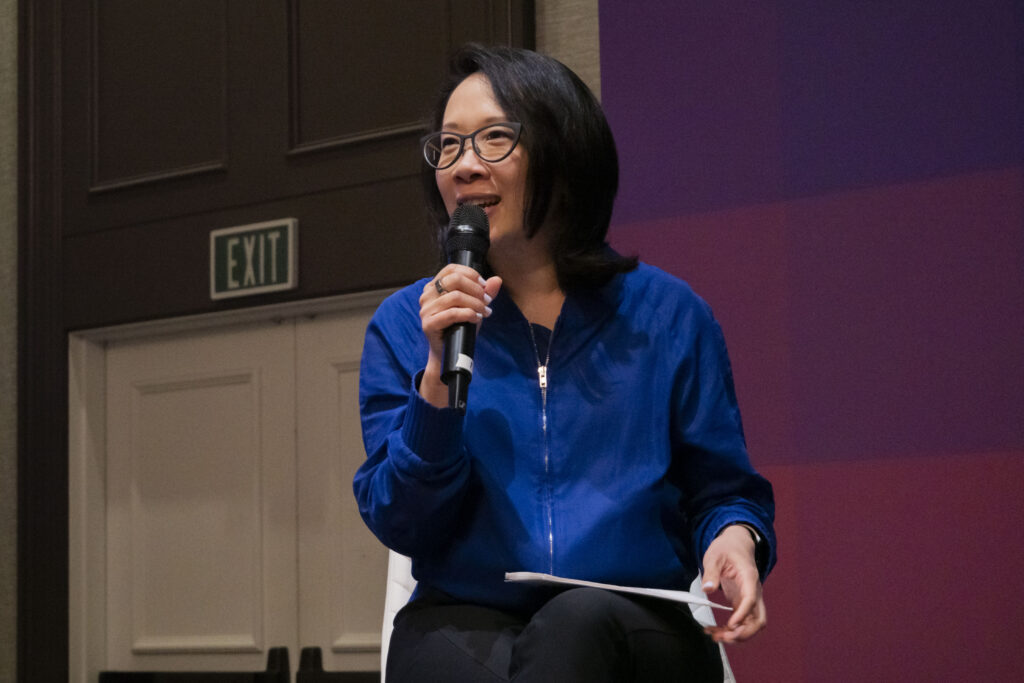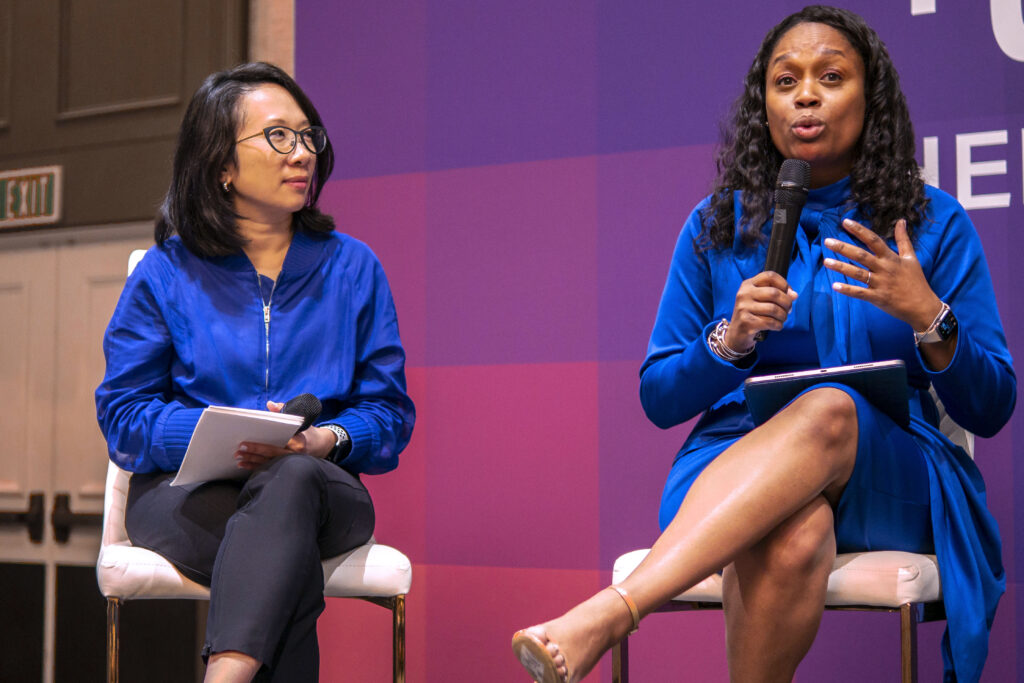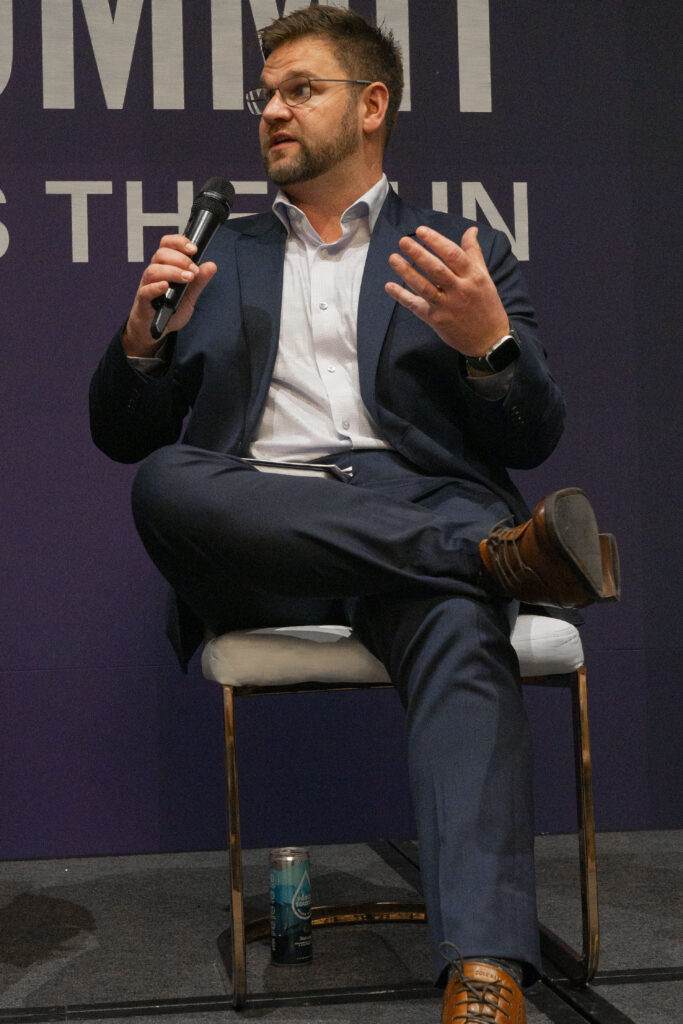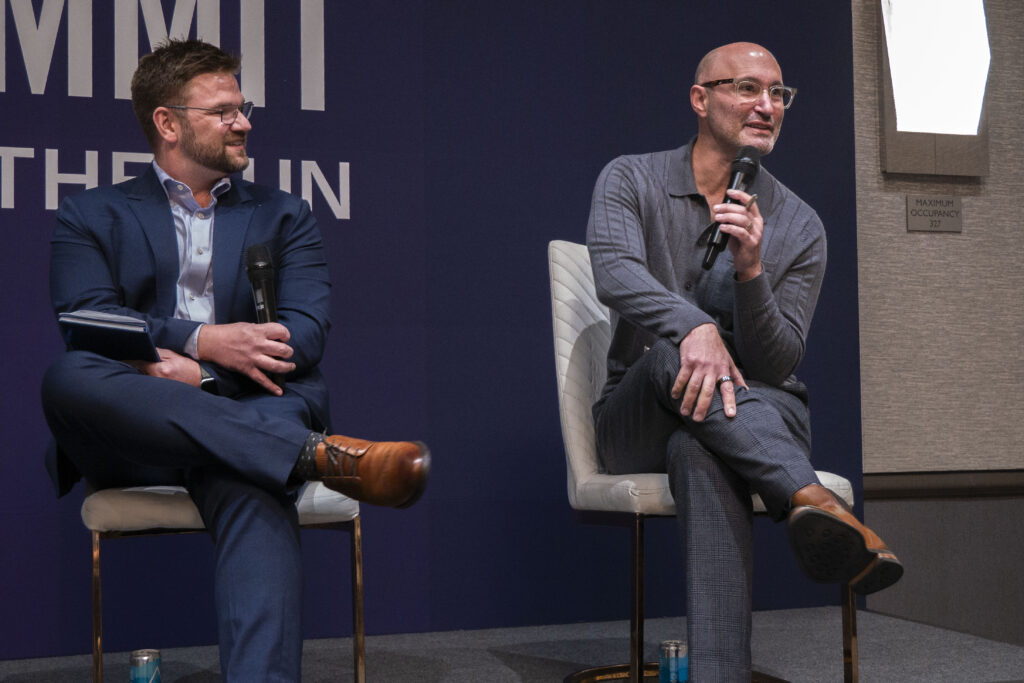
Supporting the Whole Child through Holistic Teaching Methods

By Brennan LaBrie
Educators and innovators co-building new models, technologies and practices aimed at improving teaching and learning must cater not just to the student, but the entire child.
This principle was the foundation for the panel on April 16 at the ASU+GSV Summit in San Diego that featured EOS President Sasha Rabkin, along with other leaders from organizations working to improve the education landscape in the U.S.
Dr. Rabkin joined a collaborative discussion led by Sandra Liu Huang, Head of Education and Vice President of Product at the Chan Zuckerberg Initiative, on shaping classroom environments and implementing technology to benefit the social and emotional wellbeing of students as well as their academic success.
The conversation centered on the power that taking a whole child approach to education, including implementing social emotional learning (SEL) practices, can have on the holistic learning and development of students. The panelists also shared how they leverage cross-sector collaboration and incorporate the needs and perspectives of students, teachers and local communities in their work.
Dr. Rabkin sat beside Dr. Aaliyah Samuel, President and CEO of the Collaborative for Academic, Social, and Emotional Learning (CASEL); Dr. Nick Yoder, Director of Strategic Initiatives at Harmony Academy, a social and emotional learning program at National University; and Lisa Harmon-Martínez, Director of Learning by Doing at Future Focused Education.
The panelists represent people “doing the work, day-in and day-out” of building support structures for young people, and at a wide range of levels, Huang said.
“A big theme of this whole child work is that it takes many perspectives,” she said. “It’s inherently multifaceted.”
We’ve shared some of the key quotes from the panel below.

Sandra Liu Huang
“Our work is really centered around unlocking student potential; thinking about meeting each student where they are and really thinking about students holistically, not just with math and reading curriculum – but really, what do they need, as a young person, developmentally, right now and in preparation for their future?”
Learn more about how CZI supports educators here.

Dr. Aaliyah Samuel
“We’re at almost 50% of our nation’s kids reporting some kind of mental health crisis or issue…the issue for our time is this issue of our wellbeing – how do we really support and educate the whole child? And so to me, the bright side is that we’re having very intentional and deliberate conversations on how to not only support young people, but the adults as well.”
“There is this tension both in the field and politically around SEL and academics and kind of pitting the two against each other. And one of the things we saw firsthand coming out of the pandemic is regardless of what educator you spoke with – rural, urban, rich, poor, conservative state or liberal state, however you want to package it – relationship loss was as equal as academic and instructional learning time. And so we have to continue to integrate (SEL). And for the teachers who say, ‘oh my gosh, one more thing,’ the thing about social emotional learning is that with the right professional development, you’re actually giving educators the vocabulary and the skills to be able to manage the behaviors that are already happening in the classroom.”
Learn more about CASEL’s work here.

Dr. Nick Yoder
“The carefulness of the language that you use when we talk about SEL is also incredibly important, meaning – at what level are we talking about? Because when you’re talking about skills and the competencies that we have, you will see social emotional competencies up and down the academic standards…and so saying that social emotional learning isn’t already embedded in academic standards is false. But then also just saying SEL is good just in and of itself is also really important.”
“We’re really trying to think about the ecosystem of the kid. We’re really trying to think about – what are the resources and supports that we can offer, not only within a school context, but what are the resources that we can offer families and (children) in out-of-school settings?”
Learn more about Harmony Academy’s work here.

Dr. Sasha Rabkin
“Educators want to educate children. And when we build things for educators, we have to have faith that they are able to use them. Building tools in spite of the people is not a good strategy for change. And so we embed these tools into a school structure that is taking something that everybody’s already saying they want – life after high school exists – and turning them into usable tools that are both complicated in the science but simple in their delivery, because all they do is they help schools see students. And if you can’t see young people, you won’t engage them. And if you don’t engage them, you can’t resource them.”
“Education is about proximity and relationships – anything else is a distraction. And if we don’t build tools that help to operationalize proximity and relationships, we’re just going to find out that we’re sort of putting ornaments on a tree.”

Lisa Harmon-Martínez
“So many of our schools now, especially in the city that I live in, they’re fenced off to the community; you have to have a badge to come in, you have to have a background check to come in. Those are all barriers.”
She and her team aim to help create policies that “enable the community to be a partner in education so that the onus isn’t entirely on the teacher anymore, because our communities have so much wisdom and knowledge and experiences that they want to share with young people – that they need to share. And in New Mexico, we’re particularly concerned about sustaining language and sustaining culture, and the community is an essential part of education.”
Learn more about Future Focused Education’s work here.
Watch the full panel on the GSV Youtube channel.
Brennan LaBrie helps EOS and its partners tell their stories and spread awareness of their work through the mediums of print, audio and video. With a background in local journalism, he loves sharing the stories of the individuals and organizations driving impact in their community and beyond.